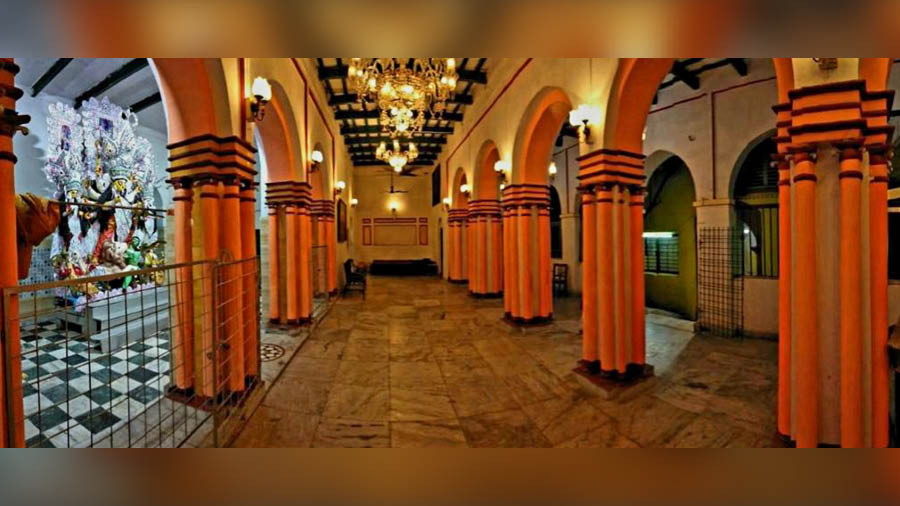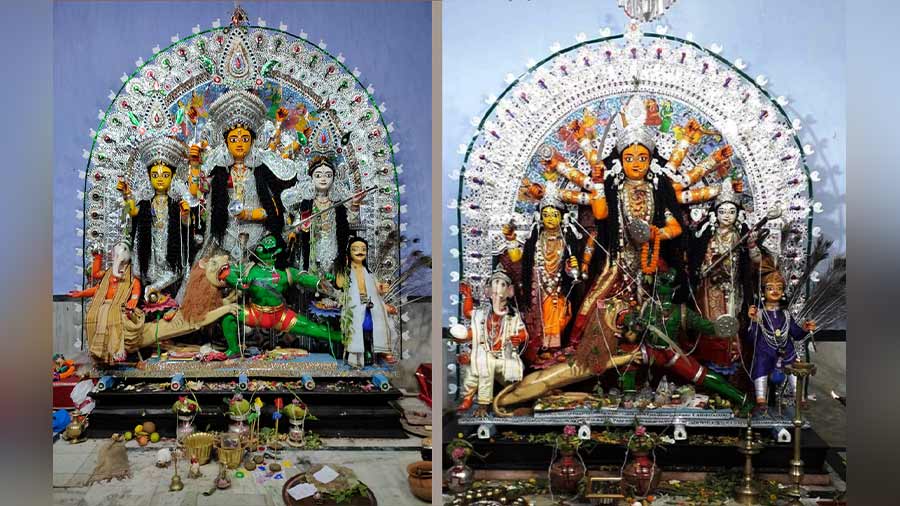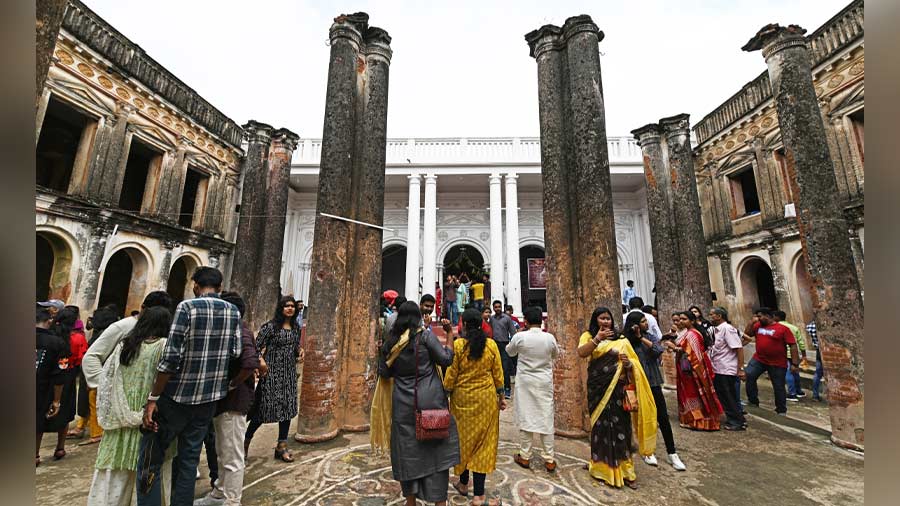Durga Puja at the Roy Chowdhury family home in Howrah is a 20-day affair. The festivities begin with priests visiting the house to inspect the idol-making and end with the goddess’s crown being placed on the family deity’s head after immersion.
The royal family originally hailed from a village near Barrackpore and were landowners and tax collectors of vast areas of Howrah’s Domjur, Sankrail, Falak, Shibpur and other places still carry on a legacy that dates back to more than 300 years as claimed by senior members of the family.
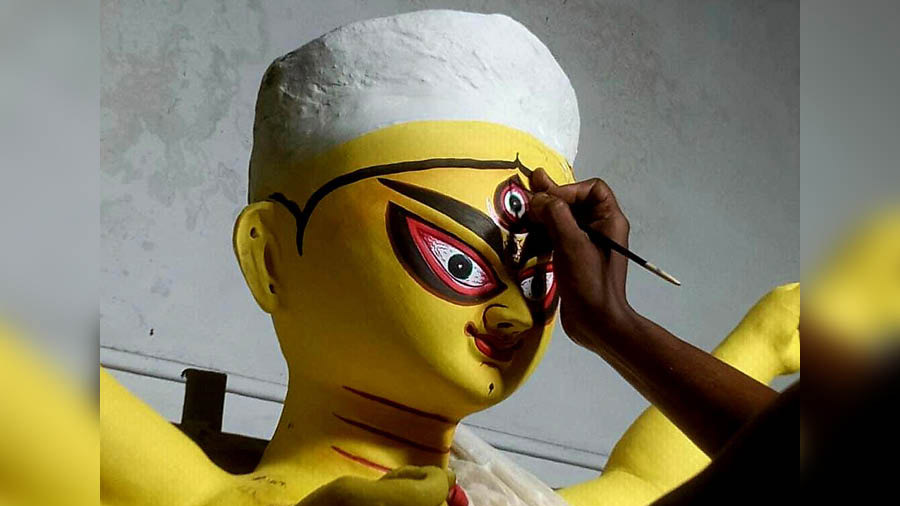
The idol to this day is ‘shabeki’ (traditional) with big eyes. The skin colour of Durga is bright yellow
The Roy Chowdhury family puja dates back to 300 years. Legend has it that it was started by Raja Ram Bramha Roy Chowdhury after he had a dream. He once came to know that his only daughter plays with a girl of her age named Padmavati and Raja expressed his wish to meet her. When the daughter took his father to meet her friend she found nothing but an imprint of two small female feet on the mud beside a water body. The same night Raja saw a dream where a teenage girl appeared and asked him to invite her to his house as daughter. This prompted Raja to start a puja in the family home. The deity was named Padmavati.
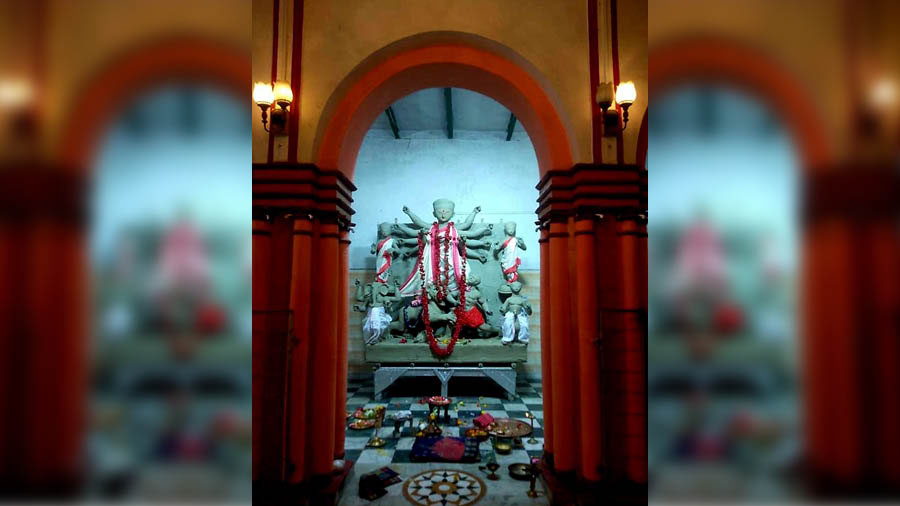
The worshipping of the incomplete idol – two weeks before Puja
The puja became an annual event of the area and in the time of Khetranath Chowdhury and his next generation Ramanath Chowdhury, who was a worshipper of Batai Chandi, the family temple of Batai Chandi was set up in Mandirtala.
The family, a believer of Chandi of the Shakta school of Hinduism, worships Durga in Brihat Nandikeshwar way. The Devi is worshipped as mother and she is considered a symbol of victory over every evil.
It all begins on the Navami during the fortnight before Devi Paksha when a group of priests visit the house to survey the idols being made and ensure that it is in keeping with the description of the Devi in various Vedic texts. If satisfied, the priests give their approval and Durga Puja begins in the Roy Chowdhury family. The idols are finished by Panchami.
The idol to this day is shabeki (traditional) with big eyes. The skin colour of Durga is bright yellow.
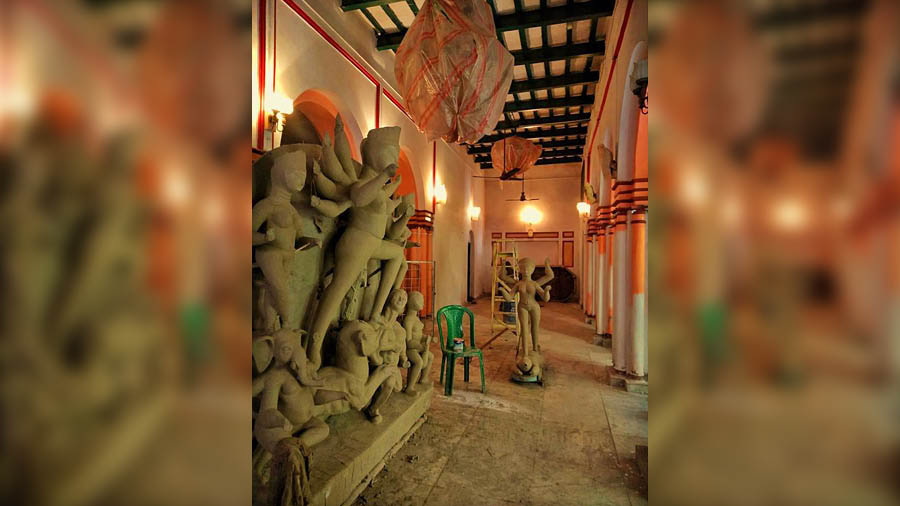
The idol being made at the ‘dalan’
Animal sacrifice is performed before the Devi on Saptami, Ashtami and Navami. Besides the offerings made by the family, local people are also allowed to offer animals but meat is not offered to the goddess. Fish is, however, offered as prasad.
Kumari Puja is performed on Ashtami and draws large crowds.
During immersion on Dashami, the idol is not taken to all 10 corners. Instead, it is just taken from the vehicle and handed over to loaders who take it to the water. The mangal ghat, the sacred earthen pot, is not taken to the immersion.
Another intriguing ritual is that the goddess’s mukut (crown) is taken off at the time of immersion and placed on the head of the family deity Batai Chandi, where it remains for a year. The previous year’s crown is taken off and destroyed. Only after this ritual do the members of the family return to their ancestral home in Mandirtala of Shibpur in Howrah.
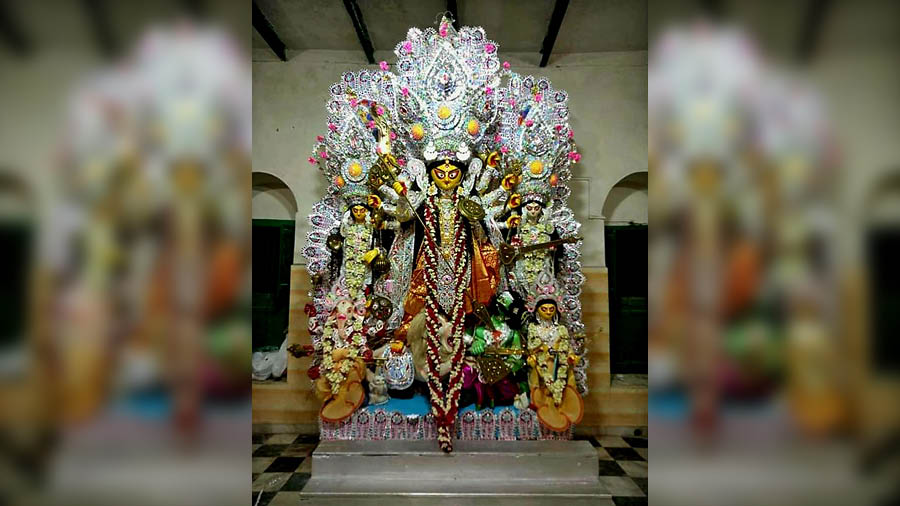
The idol is based on the typical West Bengal school of idol-making
The puja is largely inclusive in spirit with widows being allowed to take part in all rituals except sindoor khela.
Senior member of the family, Arun Roy Chowdhury, is happy that puja has survived the ravages of time but rues that the “call of spirituality” is missing. “It is more a time for the family to get together despite everyone’s busy schedules,” said Roy Chowdhury, who is nearing 70. “The puja, too, has kept up with time and many harsh rituals have been abandoned. That is how the modernisation of a 700-year-old puja has happened.”
How to reach
- Cross the second Hooghly bridge and reach Mandirtala bus stop.
- Walk down for five minutes to Sanjher Aatchala temple and then to Dharmatala Lane towards Shibpur.
- Ask anyone for directions to the Roy Chowdhury bari.
